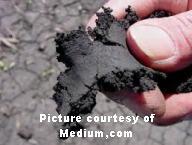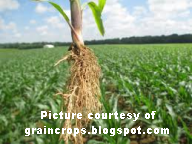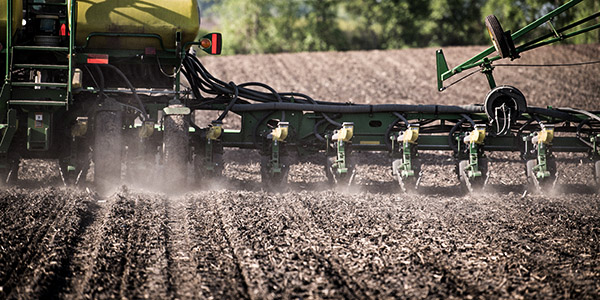AGRONOMICSUPPORT
YOU CAN TAKETO THE FIELD
Is Your Seedbed Ready?
It’s been said that the greatest yield potential of any seed is while it’s still in the bag. It is what we do after we open that bag of seed that ultimately determines how the seed performs. Some of those factors, such as weather, are out of our control. But, there are several decisions we make every day that have a huge impact on the outcome of the crops we raise. One factor we often take for granted is the importance of good seedbed preparation to the overall success of a crop.
The most common cause of seedling failure is poor seedbed preparation. The best goal of any seedbed preparation should be to retain soil moisture, remove competition and improve seed-to-soil contact to allow for proper seed depth and maximize germination and emergence. Here’s some tips for how to create the ideal seedbed:
 Don’t work wet soil.
Don’t work wet soil.
Working soil too early or too wet can result in cloddy soils, smearing and side wall compaction. A good rule of thumb is: if you take a sample of soil and rub it between your thumb and pointer fingers and the ribbon reaches more than two inches, the soil is too wet to work. Working soil that is too wet can also create a compaction layer just below the planting zone, making it difficult for roots to develop properly.  Planting into soils that are too wet also causes side wall compaction. This happens when the disc openers make a shear cut in the seed trench to drop the seed into. As the crop roots grow and develop, they are unable to grow laterally. This creates a “wedge” or “mohawk” shaped root system. When this happens, it leaves the crop susceptible to nutrient and water deficiencies, as well as an increased probability of having standability issues.
Planting into soils that are too wet also causes side wall compaction. This happens when the disc openers make a shear cut in the seed trench to drop the seed into. As the crop roots grow and develop, they are unable to grow laterally. This creates a “wedge” or “mohawk” shaped root system. When this happens, it leaves the crop susceptible to nutrient and water deficiencies, as well as an increased probability of having standability issues.
Don’t over-work the soil.
Over-working fine textured soils can leave your soils vulnerable to crusting in the event of heavy rain or excessive heat. Crusting causes stand loss and uneven emergence. Wind erosion can also occur and cause injury to newly emerged seedlings, leaving them susceptible to soil-borne pathogens. Overworking soils can also cause them to dry out, thus robbing the seeds of the necessary moisture needed to germinate. This can create pockets of uneven emergence. A corn kernel needs to soak up about 30% of its weight in water to induce germination, whereas soybeans need about 50% water by weight to emerge.
Plant into a firm seedbed.
It is crucial that the seedbed be firm to optimize seed-to-soil contact. This allows for maximum and consistent moisture uptake needed for optimal seedling stand establishment. If you walk across a freshly worked field and sink more than an inch (about halfway up the toe of your boot), it is too loose. A firm seedbed also allows for consistent planting depth and seed-to-soil contact.
There are many different tools currently on the market that people use to obtain a “perfect” seedbed. Some of the more popular tools are field cultivators, disks, and harrows. In recent years, vertical tillage has gained some popularity. These tools include Kwik-Till®, Pro-Till®, and Great Plains®. Vertical tillage is usually done at a high rate of speed. This is typically done at a deeper depth in the fall (four to six inches) and a shallower depth in the spring (two to four inces). This tillage practice needs the speed to mix and size any residue. Obviously different tools work differently in different soil conditions, so it is important to know what your personal objectives are and what your soil types are, to get your crop off to the best start that you can.
Download a copy of this technical bulletin here: Is Your Seedbed Ready?
References and Additional Information
- “Strategies for Successful Corn Planting” by Jeff Coulter, University of Minnesota Extension Agronomist
- “Principles for Seedbed Preparation for Conservation Seedings” USDA Natural Resources Conservation Service, Boise ID






Technical Team Agronomist